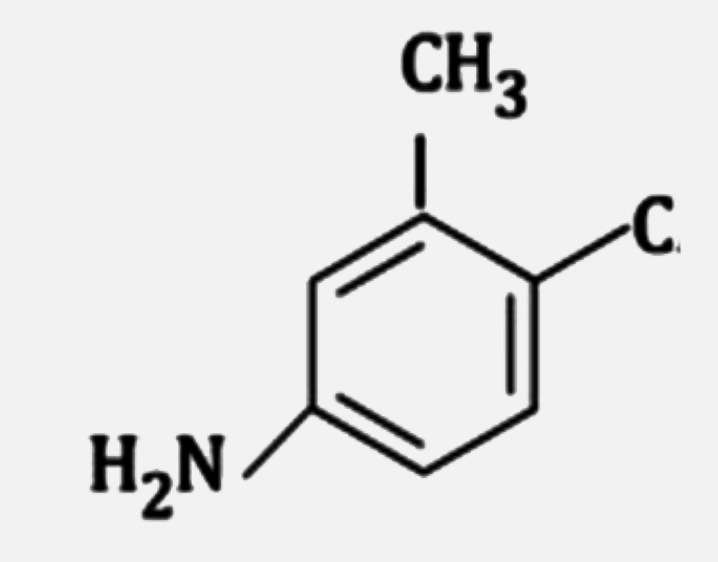Consider the following sequence of reaction:
M2+(aq.)NH4Cl(s)+(NH4)2CO3sol.−−−−−−−−−−−−−−−−−−→Q⏐⏐
⏐
⏐↓CH3COOH−−−−−−−−−−−−−−−−−−−−−−−→Followed by addition of (NH4)2C2O4R⏐⏐
⏐
⏐↓
Which of the following cation can form ppt. Q but does not form ppt. 'R' ?
Mg2+(aq.)
Ca2+(aq.)
Sr2+(aq.)
Ba2+(aq.)
The correct Answer is:D
To solve the problem, we need to analyze the sequence of reactions involving the cation M2+ and determine which cation can form precipitate Q but does not form precipitate R.
1. Identify Possible Cations:
The cations M2+ can be Mg2+,Ca2+,Sr2+, or Ba2+.
2. First Reaction:
The first reaction involves M2+ reacting with NH4Cl and (NH4)2CO3:
M2++NH4Cl+(NH4)2CO3→Q
This reaction typically forms a carbonate precipitate of the cation involved.
3. Formation of Precipitate Q:
- For Mg2+: Mg2++(NH4)2CO3 forms MgCO3, which is soluble.
- For Ca2+: Ca2++(NH4)2CO3 forms CaCO3, which is a precipitate.
- For Sr2+: Sr2++(NH4)2CO3 forms SrCO3, which is a precipitate.
- For Ba2+: Ba2++(NH4)2CO3 forms BaCO3, which is a precipitate.
4. Identify Precipitate R:
The next step involves adding CH3COOH followed by (NH4)2C2O4 to Q:
Q+CH3COOH+(NH4)2C2O4→R
This reaction typically forms an oxalate precipitate.
5. Formation of Precipitate R:
- For Mg2+: Since Q is soluble, no R is formed.
- For Ca2+: CaCO3 reacts to form CaC2O4, which is a precipitate.
- For Sr2+: SrCO3 reacts to form SrC2O4, which is a precipitate.
- For Ba2+: BaCO3 reacts to form BaC2O4, which is soluble.
6. Conclusion:
- Mg2+ does not form Q (as it is soluble).
- Ca2+, Sr2+, and Ba2+ all form precipitates Q and R.
- Only Ba2+ forms precipitate Q but does not form precipitate R (as BaC2O4 is soluble).
Final Answer:
The cation that can form precipitate Q but does not form precipitate R is Ba2+.
The cations M2+ can be Mg2+,Ca2+,Sr2+, or Ba2+.
The first reaction involves M2+ reacting with NH4Cl and (NH4)2CO3:
M2++NH4Cl+(NH4)2CO3→Q
This reaction typically forms a carbonate precipitate of the cation involved.
- For Mg2+: Mg2++(NH4)2CO3 forms MgCO3, which is soluble.
- For Ca2+: Ca2++(NH4)2CO3 forms CaCO3, which is a precipitate.
- For Sr2+: Sr2++(NH4)2CO3 forms SrCO3, which is a precipitate.
- For Ba2+: Ba2++(NH4)2CO3 forms BaCO3, which is a precipitate.
The next step involves adding CH3COOH followed by (NH4)2C2O4 to Q:
Q+CH3COOH+(NH4)2C2O4→R
This reaction typically forms an oxalate precipitate.
- For Mg2+: Since Q is soluble, no R is formed.
- For Ca2+: CaCO3 reacts to form CaC2O4, which is a precipitate.
- For Sr2+: SrCO3 reacts to form SrC2O4, which is a precipitate.
- For Ba2+: BaCO3 reacts to form BaC2O4, which is soluble.
- Mg2+ does not form Q (as it is soluble).
- Ca2+, Sr2+, and Ba2+ all form precipitates Q and R.
- Only Ba2+ forms precipitate Q but does not form precipitate R (as BaC2O4 is soluble).
The cation that can form precipitate Q but does not form precipitate R is Ba2+.
Topper's Solved these Questions
- TYPES OF REACTIONSBOOK - VK JAISWAL ENGLISHCHAPTER - TYPES OF REACTIONSEXERCISE - LEVEL 3
44 Videos
- TYPES OF REACTIONSBOOK - VK JAISWAL ENGLISHCHAPTER - TYPES OF REACTIONSEXERCISE - ONE OR MORE ANSWERS IS/ARE CORRECT
40 Videos
- TYPES OF REACTIONSBOOK - VK JAISWAL ENGLISHCHAPTER - TYPES OF REACTIONSEXERCISE - SUBJECTIVE PROBLEMS
42 Videos
- s-BLOCK ELEMENTSBOOK - VK JAISWAL ENGLISHCHAPTER - s-BLOCK ELEMENTSEXERCISE - SUBJECTIVE PROBLEMS
2 Videos
Similar Questions
Knowledge Check
Consider the following sequence of reactions
CH3−O∣∣C−CH3Ba(OH)2−−−−−→AΔ−−→B↓NaBH4
The final product (C) is:A(CH3)2C(OH)CH2COCH3B(CH3)2C=CHCOCH3C(CH3)2CHCH2CHOHCH3D(CH3)2C=CHCHOHCH3Identify A in the following sequence of reactions
ANH3−−→1 molBCHCI3−−−−→Alc.KOHCReduction−−−−−→(CH3)2CHNHCH3AEthyl halideBIso-propylamineCn-propyl halideDIso- propyl halide
Which of the following pairs of cations ca be separated by adding NH4Cl,NH4OH and then (NH4)2CO3 to the mixture?
View SolutionComplete the following reaction: (NH4)2CO3Δ−−→
View SolutionNiCl2+2dmgNH4OH−−−−→Ni(dmg)2⏐⏐ ⏐↓
View SolutionNiCl2+2dmgNH4OH−−−−→Ni(dmg)2⏐⏐ ⏐↓
View SolutionWhich of the following species is not expected to be a ligand
⊕NO
NH⊕4
(c ) NH2−NH⊕3
(CO) .
View SolutionIdentify 'M' in the following sequence of reactions
C8H6Cl2O(M)NH3−−→C8H8ClNOBr2−−−→NaOH
View Solution
